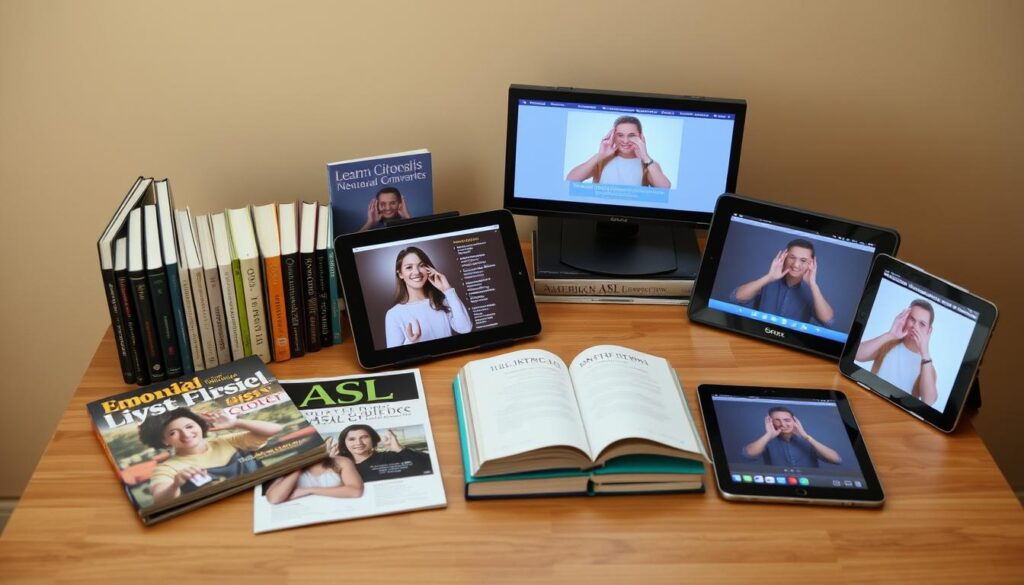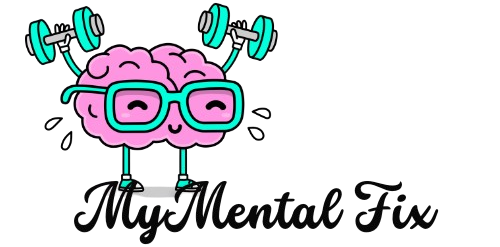Table of Contents
In our world, we communicate in many ways. Saying I love you in sign language is special. It’s not just a few signs; it’s a way to connect visually. American sign language I love you
This guide will help beginners learn to sign “I love you”. It also shows why sign language is important for love. Learning this phrase can make your relationships stronger.
Introduction to Sign Language
Sign language is a visual way to communicate, vital for the deaf and hard-of-hearing. It includes systems like American Sign Language (ASL). Each has its own rules, grammar, and syntax, making communication rich and expressive.
What Is Sign Language?
Sign language uses gestures, facial expressions, and body language to send messages. ASL, for instance, is common in the U.S. and has its own structure, unlike spoken languages. Countries use different sign languages, showing cultural differences but serving the same purpose: to help people communicate.
Importance of Learning Sign Language
Learning sign language does more than just talk to the deaf. It makes communities more inclusive and improves social interactions. It helps understand the deaf community’s challenges and breaks down barriers. It also strengthens relationships and makes everyone feel included.
Basic Concepts of Sign Language
Learning the basics of American Sign Language (ASL) is key for good communication. This part covers the essential parts, like the american sign language alphabet. It’s used for spelling names and words. You’ll also learn important ASL phrases to improve your talks and learn more signs.
The Alphabet in American Sign Language (ASL)
The american sign language alphabet has hand signs for each letter. It lets you spell out words. Knowing the alphabet helps you share names, places, and ideas clearly. It takes practice but is a big step in learning more.
Key Phrases Beyond ‘I Love You’
While it’s nice to show love, knowing more ASL phrases is even better. Learning phrases for basic needs, feelings, and questions makes talks more meaningful. Here are some phrases to get you started:
- Hello
- Thank You
- How Are You?
- Help
- Goodbye
Knowing these phrases helps you join in more fully and boosts your confidence in signing.
| Phrase | Sign Description |
|---|---|
| Hello | Raise your hand and move it slightly outward from your forehead. |
| Thank You | Place your fingertips near your chin and move them away from your face. |
| How Are You? | Hold your hands in front, palms up, and move them in a circular motion. |
| Help | Place one hand on top of the other and move them upward. |
| Goodbye | Wave your hand as you would when saying goodbye verbally. |
Expressing ‘I Love You’ in ASL
Learning the i love you sign in American Sign Language (ASL) is key to sharing your feelings. This guide will help you learn each part of “I love you.” You’ll find it easy to remember and practice.
The Sign for ‘I’
The sign for ‘I’ is simple. Just raise your pinky finger while keeping the others down. This shows the word “I” in ASL.
The Sign for ‘Love’
To say “love,” cross your arms over your chest. It’s like hugging yourself. This shows love well. Knowing how to sign love in asl is important for showing your feelings.
The Sign for ‘You’
To say “you,” point with your index finger at the person. This sign clearly shows who you’re talking to.
Putting It All Together
Now, let’s put it all together. Start with your pinky finger for ‘I.’ Then, cross your arms for ‘love.’ End with your index finger pointing for ‘you.’ Practice this to make your sign smooth and heartfelt.
Context Matters: Situations for Using the Sign
Understanding the context is key when using sign language, especially for saying “I love you.” Different situations need different levels of formality. Knowing when to use the sign can make your message clearer and more heartfelt.
Casual Settings
At home with friends or family, signing “I love you” can make things feel cozy and friendly. You can use it in fun chats, during celebrations, or while playing games. It’s a great way to bond with those you care about.
Formal Settings
But, formal events like weddings or business meetings need a different approach. At a wedding, signing “I love you” can be a beautiful gesture. It’s important to balance being formal with showing your feelings in these situations.
Emotional Contexts
Sign language’s emotional context is crucial in tough times. When dealing with loss or strong emotions, think about how others might feel. Your sign for “I love you” can offer comfort and strengthen bonds during hard moments.
Tips for Learning Sign Language
Learning American Sign Language (ASL) can be very rewarding. To get the most out of it, try these tips. They can help you improve your skills and understanding.
Practice Regularly
Practicing every day is key to mastering ASL. Make time each day to review signs and practice finger spelling. Doing this daily helps you remember better and builds muscle memory.
Try to use signs in your daily life. This will help you remember them better.
Use Visual Aids
Visual aids like videos and images can really help. They show you the right hand shapes and movements. Look for ASL learning resources with interactive tutorials.
These can help you see and practice signs more easily.
Join a Community
Being part of an ASL community is very helpful. Look for local groups or online forums. Here, you can practice and ask questions.
Being in a community makes learning more fun and supportive.
| Tip | Description | Benefits |
|---|---|---|
| Practice Regularly | Dedicate time each day for ASL practice. | Improves muscle memory and recall. |
| Use Visual Aids | Incorporate videos and images in learning. | Enhances understanding through visuals. |
| Join a Community | Connect with other ASL learners. | Provides support and opportunities for practice. |
Resources for Learning ASL
Learning American Sign Language (ASL) lets you connect with the deaf community. There are many resources to help you learn, making it fun and effective. You can find everything from online tutorials to apps and books.
Online Tutorials
Many websites offer tutorials for all skill levels. Sites like Lifeprint and ASL University have lessons that cover the basics and more. They use videos and quizzes to help you learn better.
Apps for ASL Learning
Apps have changed how we learn sign language. Apps like “The ASL App” and “SignSchool” make learning fun with visuals and games. They let you practice anytime, giving you feedback to improve.
Books and Educational Materials
Books are also key for learning ASL. Many ASL books have pictures and detailed explanations. Books like “American Sign Language Dictionary” and “Signing Naturally” are great for both beginners and those who want to improve.
| Resource Type | Examples | Features |
|---|---|---|
| Online Tutorials | Lifeprint, ASL University | Structured lessons, videos, quizzes |
| Apps | The ASL App, SignSchool | Interactive learning, practice on-the-go |
| Books | American Sign Language Dictionary, Signing Naturally | Illustrations, comprehensive explanations |

Variations of ‘I Love You’ in Different Contexts
Showing love can be done in many ways, especially in sign language. Knowing the different ways to say “I love you” helps you connect better with others. There are special signs for romantic, familial, and friendly love. Each one has its own meaning and can make your interactions more meaningful.
Romantic Love
The sign for romantic love is often more passionate. You might place your hand over your heart to show deep feelings. This sign shows you’re deeply committed to your partner and value their place in your life.
Familial Love
Signs for family love are softer and more caring. You can use both hands to make the sign, showing warmth and support. This sign means you’re there for your family, offering love and safety without condition.
Friendly Love
Signs for love between friends are simple and friendly. A thumbs-up with the “love” sign works great. It shows you care about your friend without the deep feelings of romance.
The Impact of Using Sign Language
Using sign language changes how we talk to each other. It helps break down barriers in communication. Learning American Sign Language (ASL) opens doors to understanding and connecting with others.
This skill is key in today’s world. It helps us reach out and connect with people from all backgrounds.
Promoting Inclusivity
Sign language makes our communities more welcoming. It lets everyone join in conversations, no matter if they can hear or not. Learning sign language helps us see things from different perspectives.
It builds empathy and bridges gaps between people. This way, we all feel more connected and valued.
Enhancing Communication
Sign language improves how we communicate. It makes us better at picking up on words and body language. Knowing ASL lets us dive into conversations and connect deeply with others.
It shows the true power of human connection. We can talk and understand each other better, no matter where we come from.

Using sign language helps us understand and connect with each other. It makes our communities stronger and more welcoming. By embracing sign language, we can make a big difference in our world.
Common Mistakes to Avoid
Starting your sign language journey? Knowing common mistakes can help you learn faster. These errors can make your communication clearer and avoid misunderstandings. Two big mistakes are mispronouncing signs and ignoring the context.
Mispronouncing Signs
Mispronouncing signs is a common error. It happens when you rush or don’t pay attention to hand movements. To improve, practice in front of a mirror and ask for feedback from others. Clear signing is key for good communication.
Ignoring Context
Ignoring the context is another mistake. Signs mean different things in different situations. Knowing the context helps your message get across right. Always think about the setting and who you’re talking to when you sign.
| Mistake | Description | Solution |
|---|---|---|
| Mispronouncing Signs | Incorrect hand shapes or movements can lead to confusion. | Practice regularly and record yourself to notice errors. |
| Ignoring Context | Failure to recognize emotional or situational appropriateness may change the meaning. | Always assess the context before signing to ensure clarity. |
Stay alert to these mistakes to improve your sign language skills. With careful practice, you’ll become more skilled at communicating. This will help you grow in your sign language journey.
Encouraging Others to Learn
Getting your friends and family to learn sign language can be very rewarding. When you all start together, it makes learning more fun and strengthens your bonds. It creates a community where everyone can share their journey and help each other.
Benefits of Learning Together
Learning sign language with others has many benefits:
- Increased Motivation: Studying with friends can give you the push you need to keep going.
- Shared Resources: You can swap useful materials and tips, making learning easier.
- Enhanced Understanding: Talking about what you’re learning can help you understand it better.
- Fun Learning Environment: A supportive group makes learning fun, turning challenges into shared experiences.
Hosting Sign Language Sessions
To get the most out of learning together, think about hosting group ASL sessions. Here are some tips for making your practice sessions effective:
- Set a Regular Schedule: Pick a time that works for everyone to keep things consistent.
- Create a Welcoming Space: Make sure the place is comfy and good for learning.
- Use Varied Activities: Mix up games, dialogues, and group exercises to keep things interesting.
- Encourage Participation: Ask everyone to share their thoughts and practice signs during sessions.
Conclusion: Embracing the Language of Love
Learning sign language changes how we connect with others. It makes our communication better and our bonds stronger. When we say “I love you” in sign, we welcome everyone, no matter if they can hear or not.
It lets us share feelings that words can’t always express. This opens up new ways to show love and care.
Teaching others about ASL is just as important as learning it yourself. It builds a community that values everyone’s voice. When we share what we know, we grow closer and show the beauty of sign language.
Learning sign language is about love, kindness, and connecting with others. It’s about making sure everyone can communicate openly. By embracing sign language, we create deeper, more meaningful relationships.

